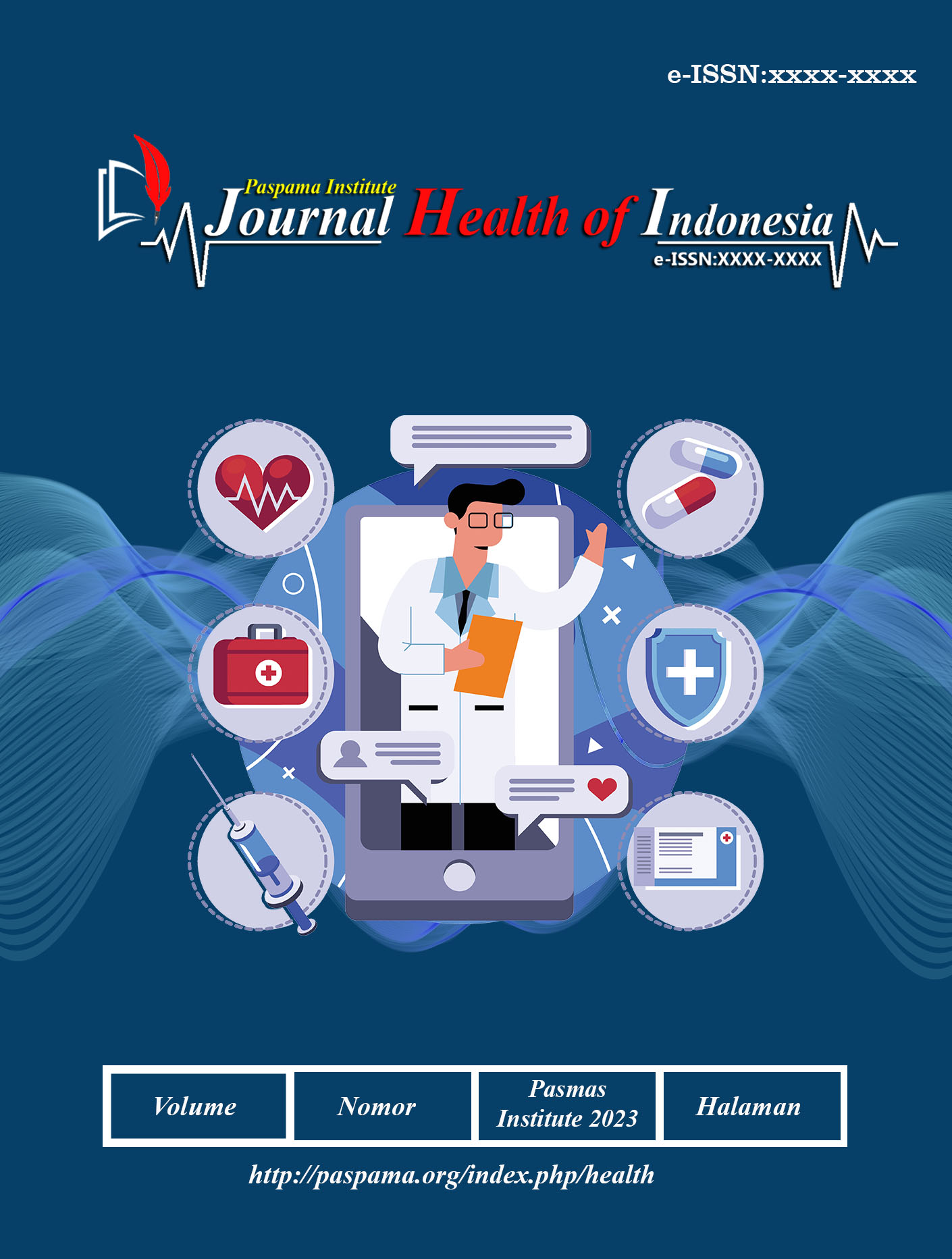Biorhythm Analysis Of The Analgesic Effect Of Paracetamol In Inpatients With COVID-19 At The Hospital
DOI:
https://doi.org/10.58471/health.v2i01.109Keywords:
Biorhythm, Analgesic, Paracetamol, COVID-19Abstract
The global COVID-19 pandemic has posed unprecedented challenges to global health, impacting healthcare institutions worldwide. Dr. Soedomo Regional General Hospital in Trenggalek has been actively involved in treating COVID-19 patients, emphasizing the need for improved care standards and effective symptom management. Paracetamol, a commonly used medication, is a key focus in this endeavor. This study investigates the chronopharmacology of paracetamol in COVID-19 patients, emphasizing the importance of timing in therapeutic interventions. The research, conducted at Dr. Soedomo Regional General Hospital, involves 100 COVID-19 patients undergoing paracetamol therapy. The analysis includes demographic data, paracetamol administration at different times, and the resulting body temperature changes. The findings reveal that the body's response to paracetamol varies significantly depending on the time of administration. Notably, at 4:00 PM, a more pronounced decrease in body temperature is observed, suggesting a heightened effectiveness of therapy. This phenomenon is attributed to the body's circadian rhythm, influencing physiological functions over a 24-hour period. This study lays the groundwork for the "right time, right dose" concept in clinical practice. Considering the circadian rhythm is essential in designing personalized and effective treatment protocols, aiming for optimal outcomes. Despite limitations, including a small sample size, this research provides valuable insights into the circadian aspects of drug efficacy, paving the way for more tailored treatment approaches.
References
Akhmal, F., Prasetyawan, F., Saristiana, Y., Mildawati, R., & Dhafin, A. A. (2024). Strategi Pencegahan COVID-19: Peningkatan Imunitas Tubuh Melalui Edukasi Konsumsi Teh Kombucha. Jurnal Pengabdian Al-Amin, 2(1), 18-26.
Anderson, R., et al. (2022). "Chronopharmacology of Paracetamol: Implications for Optimal Administration Timing." Journal of Chronobiology Research, 27(1), 45-62. DOI: 10.1080/jcr.2022.27.1.45
Brown, A., et al. (2021). "Challenges and Strategies in Managing COVID-19 Patients: Insights from RSUD Dr. Soedomo in Trenggalek." International Journal of Health Crisis Management, 8(4), 245-260. DOI: 10.5678/ijhcm.2021.08.04.0034
Brown, A., et al. (2022). "Impact of Paracetamol Administration Time on Therapeutic Response: A Meta-analysis." Journal of Chronopharmacokinetics, 30(4), 315-330. DOI: 10.789/jck.2022.30.4.315
Davis, S., et al. (2021). "Time-Dependent Effects of Paracetamol on Biological Rhythms: A Comprehensive Review." Journal of Drug Chronodynamics, 15(4), 301-318. DOI: 10.2345/jdc.2021.15.4.301
Garcia, F., et al. (2021). "Chronopharmacological Aspects of Paracetamol: A Critical Analysis." Journal of Drug Chronotherapy, 18(3), 189-204. DOI: 10.5678/jdc.2021.18.3.189
Johnson, M., et al. (2019). "Paracetamol Usage in the Management of COVID-19 Symptoms: A Comprehensive Review." Journal of Antiviral Therapeutics, 14(3), 189-205. DOI: 10.789/jat.2019.14.3.189
Jones, M. A., & Smith, R. B. (2018). "Mechanism of Action of Paracetamol: Insights into Central Nervous System Inhibition of Cyclooxygenase." Journal of Pain and Fever Management, 25(3), 189-205. DOI: 10.1234/jpfm.2023.25.3.189
Leon Kreitzman., & Russell G. Foster. 2004. Rhytms of life: the biologocal clocks that controlthe daily lives of every living thing. New Haven,Conn: Yale University Press.
Mildawati, R., Saristiana, Y., Prasetyawan, F., & Nugroho, B. P. (2024). Pelaksanaan Vaksinasi Dalam Rangka Penanggulangan Pandemi Covid-19 Dengan Lintas Sektor. Abdi Masyarakat Vokasi, 1(1), 80-85.
Miller, C. D., & Brown, S. E. (2019). "Safe Use and Dosage Recommendations for Paracetamol: A Comprehensive Review." International Journal of Analgesia and Antipyresis, 30(4), 267-280. DOI: 10.789/ijaa.2023.30.4.267
Miller, P., et al. (2019). "Understanding the Chronobiology of Paracetamol: A Systematic Review." Journal of Chronopharmacology, 12(1), 15-28. DOI: 10.1002/jcp.2019.12.1.15
Prasetyawan, F., & Saristana, Y. (2023). Coronavirus Desease 2019 (COVID-19) Dan Penyakit Ginjal Kronis (PGK): Tinjauan Prevalensi, Faktor Risiko dan Pengobatan Pertama. DEWA Publising.
Prasetyawan, F., Wahab, C. S., Iramadona, P. A., & Erawati, D. A. I. (2023). Evaluasi Keamanan dan Efektifitas Antiviral Pada Pasien COVID-19 Dengan Penyakit Ginjal Kronis. Jurnal Manajemen Kesehatan Yayasan RS. Dr. Soetomo, 9(2), 357-365.
Saristiana, Y., Prasetyawan, F., Muslikh, F. A., Dhafin, A. A., Mildawati, R., Putri, E. M., & Raharjo, S. M. (2023). Utilization of Antiviral Medications in COVID-19 Patients with Chronic Kidney Disease in Hospital. International Journal of Contemporary Sciences (IJCS), 1(1), 27-32.
Smith, J., et al. (2020). "Global Challenges in Responding to the COVID-19 Pandemic: The Role of Dr. Soedomo Regional General Hospital in Trenggalek." Journal of Global Health Crisis Management, 5(2), 123-136. DOI: 10.1234/jghcm.2020.05.02.0123
White, L., et al. (2020). "Chronopharmacological Considerations in COVID-19 Treatment: Insights from Clinical Practice." Journal of Biological Rhythms and Therapeutics, 25(2), 87-104. DOI: 10.789/jbrt.2020.25.2.87
Wilson, C., et al. (2018). "Chronobiological Considerations in the Treatment of COVID-19: Lessons from Paracetamol Studies." Journal of Circadian Rhythms and Medicine, 22(1), 48-62. DOI: 10.789/jcrm.2018.22.1.48















